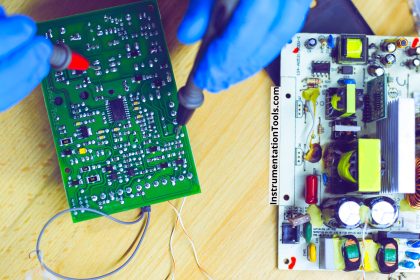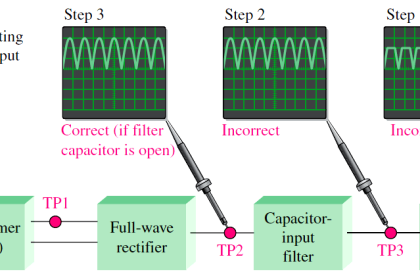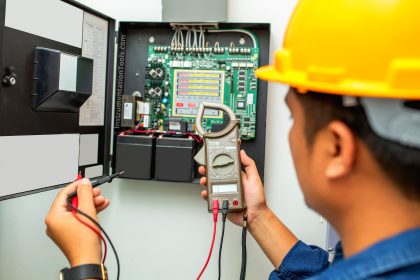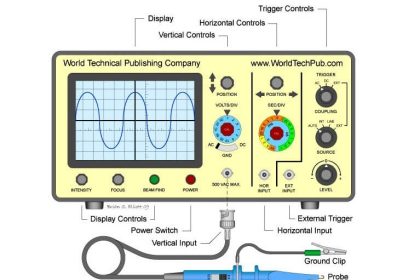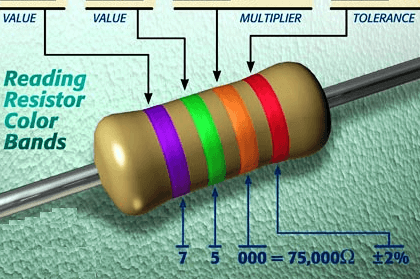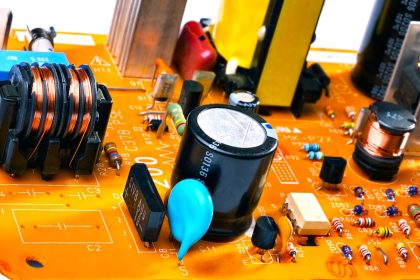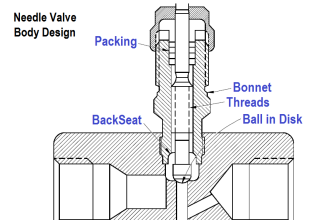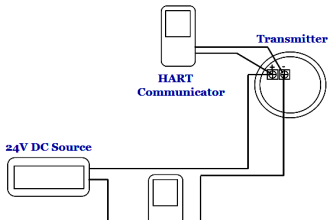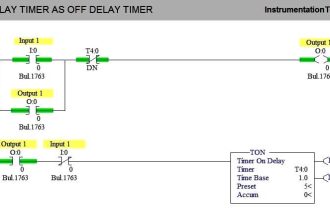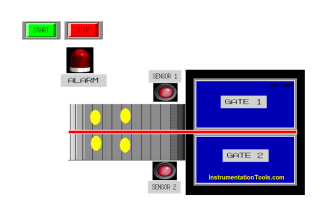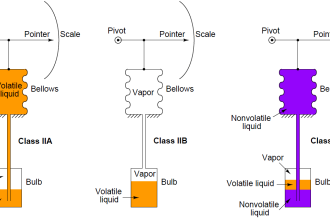In electrical circuits, resistance is a very important parameter to measure voltage and current. As per Ohm’s law, voltage is a multiplication of current and resistance. Any change in any of the parameters will directly affect the voltage.
Mostly, in electrical circuits, it is difficult to vary current. So, resistance is varied to adjust the voltage. One of the most used tools in electrical circuits for varying resistance is a potentiometer. There are various types of potentiometers available for use. In this post, we will see the types of potentiometers.
What is a Potentiometer?

As discussed earlier, resistance if varied can vary the voltage. To do this, a device called a potentiometer is used. It is a variable resistor with three terminals in it, where voltage is adjusted by a movable contact.
As the contact moves from zero to full position or vice versa, resistance is varied which varies the voltage applied to the load. Moving contact is the main element that is used to vary resistance by moving itself on the resistive track.
The track is a long and thin strip made up of carbon, cermet, conductive plastic, or a metal film. All these materials offer a resistive path to the flow of current. Refer to the image for its basic working.
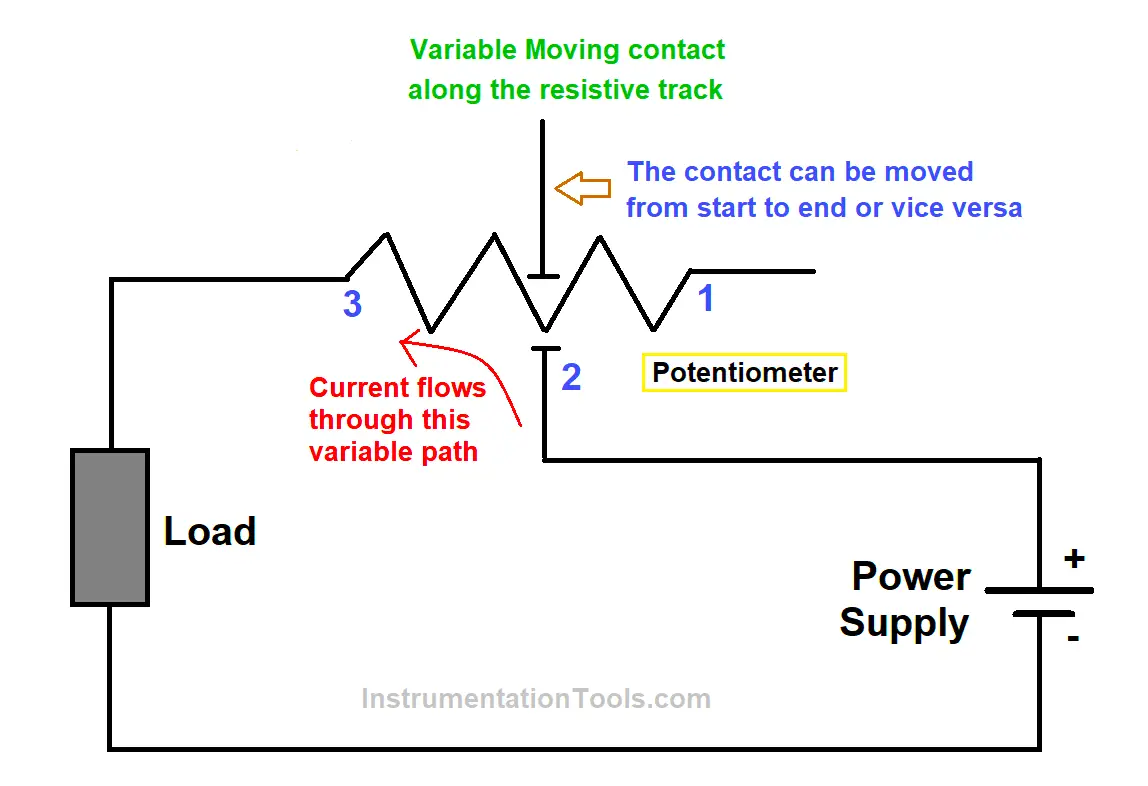
In the image, you can see that the first and third terminals are connected to the moving contact. The second terminal is connected to the positive terminal of the power supply. The third terminal is connected to the positive end of the load. The negative end of the load is connected to the negative end of the power supply.
When the contact is moved from start to end or vice versa, the resistance applied to the current flowing through the path is varied in short. This varies the voltage applied to the load. This means that the output voltage flows from the second terminal to the third terminal.
A simple example of the potentiometer is volume control in your speaker. As the pot is varied, the volume varies as the voltage applied to the amplifier varies.
Types of Potentiometers
The popular types of potentiometers are listed below.
- Linear Potentiometer
- Logarithmic Potentiometer
- Rotary Potentiometer
- Slide Potentiometer
- Dual-Gang Potentiometer
- Multi-Turn Potentiometer
- Digital Potentiometer
- Motorized Potentiometer
- Trimmer Potentiometer
- Membrane Potentiometer
- Stereo Potentiometer
- Concentric Potentiometer
- Tapped Potentiometer
- Precision Potentiometer
- Rheostat (Technically a type of potentiometer used for varying current)
- Reed Potentiometer
- String Potentiometer
- Hall Effect Potentiometer
Here we will discuss some of the important potentiometers.
Rotary Potentiometer
This is the most generally used type of potentiometer. As the name suggests, a rotary pot is given for varying resistance. The wiring is the same as discussed before, where a rotary knob is rotated by the user along the resistance track, and the voltage starts varying as the resistance is varied. It is a semi-circular type of pattern, which makes it easier for users to operate the knob.
The output voltage is measured between a moving contact and a fixed contact, as seen before. Due to this, the voltage across the load varies.
A rotary potentiometer can be further classified as – concentric, single turn, and servo.
Linear Potentiometer
The function of a linear potentiometer is the same as the rotary one; the only difference is that instead of a semi-circular object, a linear object is used which moves along the resistive track for varying resistance. It can also be termed as a sliding contact.
Linear pots are commonly used for measuring the voltage across a branch of a circuit, for measuring the internal resistance of a battery cell, and for comparing a battery cell with a standard cell.
A linear potentiometer can be further classified as – multi-turn, slide, and dual slide.
Digital Potentiometer
This is one of the advanced types of potentiometers. It is much better in accuracy due to the use of semiconductors. In this type, FET (field effect transistor) is used to vary the resistance. It consists of a series of resistors connected in parallel.
At the output of each resistor, a FET is connected. The switching time and frequency of FET are controlled in such a way that only one FET remains on at a time. Due to the location of resistors on the track, the resistance is varied depending upon which FET is on and due to which the current flows through that path. This varies the voltage across the load. The number of steps in the ladder (which means the resistors in series with FETs) determines the resolution of the digital pot.
String Potentiometer
Instead of the traditional technique of moving the object along a resistive track, this type of potentiometer is a type of transducer. It converts linear motion into an electrical signal. As the name suggests, it consists of a transducer body attached to the fixed surface, and a steel cable is mounted on it.
When the object moves due to spring tension, the cable extends or depresses, and this cable extension is used to determine the voltage applied to the load. The transducer will convert this extension measurement into an electrical signal.
Potentiometer Features and Applications
The various types of potentiometers based on their features and applications are mentioned in the below table.
| S.No. | Type of Potentiometer | Key Features | Common Applications |
|---|---|---|---|
| 1 | Linear Potentiometer | Uniform resistance change, easy to use | Audio systems, lighting control |
| 2 | Logarithmic Potentiometer | Non-linear resistance change, ideal for audio | Audio mixing boards, amplifiers |
| 3 | Rotary Potentiometer | Rotational adjustment, compact | Volume knobs, tuning knobs |
| 4 | Slide Potentiometer | Linear movement, larger footprint | Mixing consoles, light dimmers |
| 5 | Dual-Gang Potentiometer | Two independent potentiometers in one | Stereo audio systems |
| 6 | Multi-Turn Potentiometer | Multiple rotations for adjustment, high precision | Industrial controls, scientific equipment |
| 7 | Digital Potentiometer | Thin, flexible, and robust against environmental factors | Digital circuits, computer-controlled systems |
| 8 | Motorized Potentiometer | Remote or automatic adjustments | Automated audio systems, robotics |
| 9 | Trimmer Potentiometer | Small, designed for infrequent adjustments | Circuit tuning, calibration |
| 10 | Membrane Potentiometer | Thin, flexible, robust against environmental factors | Industrial sensors, musical instruments |
| 11 | Stereo Potentiometer | Dual-channel, used for stereo systems | High-end audio systems |
| 12 | Concentric Potentiometer | Multiple potentiometers in one rotary control | Multi-parameter control knobs |
| 13 | Tapped Potentiometer | Fixed resistance intervals | Stepped volume control, selector switches |
| 14 | Precision Potentiometer | High accuracy, low tolerance | Precision engineering, medical equipment |
| 15 | Rheostat | Used primarily to control current | Educational setups, some industrial applications |
| 16 | Reed Potentiometer | Magnetic reed switch, durable | Harsh environmental conditions |
| 17 | String Potentiometer | Measures linear position using a string | Automotive testing, industrial automation |
| 18 | Hall Effect Potentiometer | Magnetic sensing, contactless | Automotive throttle control, joysticks |
Each type of potentiometer has unique features and is best suited for specific applications, so choosing the right one depends on your project’s needs.
If you liked this article, then please subscribe to our YouTube Channel for Electrical, Electronics, Instrumentation, PLC, and SCADA video tutorials.
You can also follow us on Facebook and Twitter to receive daily updates.
Read Next:
- Importance of Neutral Wire
- Induction Motor Problems
- Cables between VFD & Motor
- How to Test a Battery?
- Electrical & Electronic Devices
